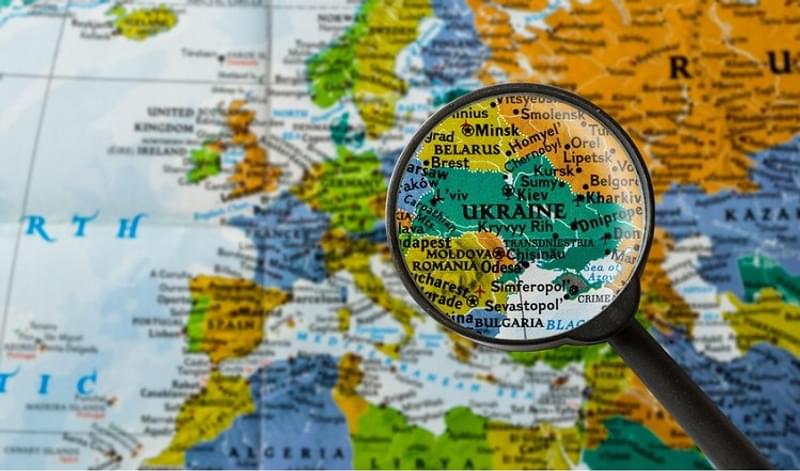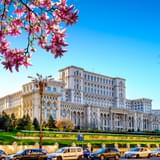The Industrial and Commercial Bank of China (ICBC) has announced the formation of a €10bn investment fund as part of its ongoing ‘16+1 Forum’ cooperation programme with countries in Central and Eastern Europe.
The fund is expected to help raise around €50bn to finance projects to develop infrastructure, high-tech manufacturing and consumer goods production in the CEE via a previously established parent company, Sino-CEE Financial Holdings Ltd.
In addition, the Vice President of the China International Chamber of Commerce Lu Jianzhong announced plans to place some of the country’s production in Ukraine’s industrial parks, as well as move towards tighter cooperation more generally. The Chinese ambassador in Ukraine also said there were discussions about establishing a free-trade zone in the region.
These moves are seen as a first step towards forming closer ties with Europe as part of China’s strategic ‘One Belt, One Road’ project, as well as a way of opening new doors to domestic bondholders seeking oversees opportunities.
While traditionally the region has largely lost out on Chinese capital flows to its more prosperous and developed Western neighbours, in recent years Beijing has begun efforts to build tighter relationships with the CEE, resulting in the 2011 ‘16+1 Forum’ in Budapest (referring to the 16 former Soviet bloc states).
Further talks took place in Bucharest in 2013 and in Belgrade in 2014, while this year Chinese President Xi Jinping paid official visits to the Czech Republic, Serbia and Poland. The newly announced deal aims to consolidate agreements made in those discussions, but while China’s grand plan to forge Silk Road trade links with Europe is a significant motivation, there are other economic and political factors at play.
“It is a smart move,” commented Charles Robertson, chief EM economist at Renaissance Capital. “China has been pretty absent from Central Europe, and indeed Eastern Europe, while the Japanese and Koreans have been investing heavily for a generation. For a country keen to extend its soft power globally, this is a positive initiative.”
In recent years China has significantly increased its presence in other regions, mainly focussing on Latin America and Africa as the cheapest opportunities providing the greatest returns.
From that perspective, delving into the lesser-yielding European states is a similar strategic investment that comes at a time when the EU may be unable to provide the support and financing that they require.
China’s cautiousness in the region in the past was dictated by historical allegiances, with the former Soviet bloc countries reluctant to engage with another Communist country. But today, as the socialist stigma fades and ideological divides are no longer sensed as acutely, market forces are bringing down those historic barriers.
The CEE itself is increasingly seen by China as part of the Western world, rather than affiliated to Russia, and thus presents opportunities for political influence.
Firstly, there is a continuing power struggle between Germany, Russia and the US over the region, which China disrupts. Secondly, by coming to the aid of some of the weaker economies it can help maintain European unity and stability in one of its key buyer markets. Finally, investing heavily into the CEE may allow it to foster lobby groups that in the future could help to put pressure on Brussels.
Robertson admits that with China, it is safe to assume that primary goals are economic, but political leverage should not be discounted:
“This deal will help China sell goods and services to the region, Robertson elaborated. “Another goal would be to widen its access to the EU markets, especially with Japan and Korea already being present there. Finally, this relationship will provide leverage when it comes to international court cases, for motions in the United Nations, or other IFIs.”
In particular, the timing of this announcement could be linked to the recent pushback Chinese investors – who are snapping up companies and assets in Western Europe – have experienced from local and regional governments.
Recently the German authorities backtracked on approving a €670mn (£603mn) acquisition of the chip equipment maker Aixtron, citing security concerns, and are now reviewing the Chinese purchase of the lighting firm Osram. Similar resistance has been seen in Switzerland and the UK, namely regarding China’s stake in the £18bn Hinkley Point C nuclear power station.
By pivoting towards Central and Eastern European states, Chinese investors are able to utilise a window of opportunity, where assets are cheaper than in developed economies, and are more open to China’s capital than those in Western Europe.
And the risk is minimal, because even if CEE states swing back towards the Eurozone as it recovers, China will have already staked out its position in the region.
Besides, the deal is ambiguous enough not to limit the industries and projects that China is able to fund, highlighting the opportunities the West could lose through protectionism.
“This fund should, via investment spending in infrastructure, play to China’s growing strength in everything from construction to telecoms, and trains to solar power, opening up new markets to Chinese companies,” Robertson concluded, noting that for the CEE states this was simply a matter of cheap financing.
However, questions remain about what proportion of these plans will actually materialise. The economic cooperation between China and CEE nations is still dwarfed by China's partnership with the rest of the EU, which received around US$20bn of Chinese FDI just last year.
As Robertson points out, the €10bn fund is a drop in the ocean compared to China’s still huge FX reserves, and it needs new markets for its exporters, given the falling current account surplus.
But if Chinese economic slowdown continues, the generous outflows of capital will begin to dry up, and at that point the question of how high the CEE region is in China’s list of priorities will become paramount. Judging by their story so far, it will be far from the top.









